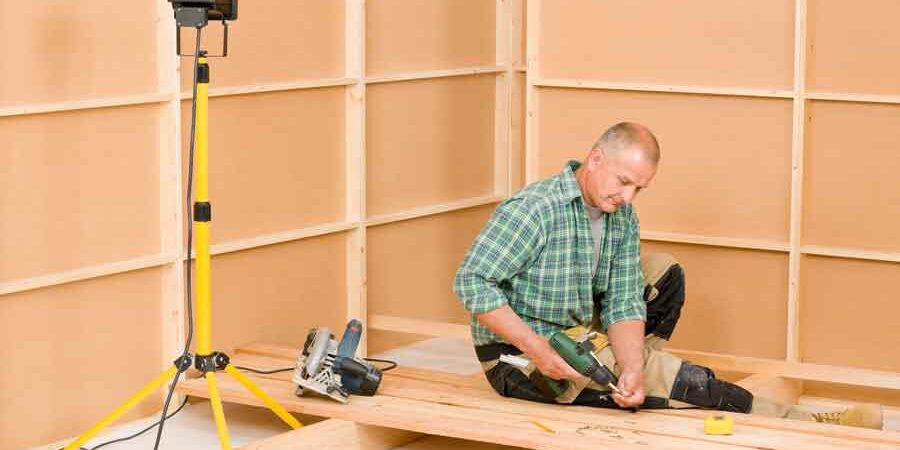Roll the Renovations into Your Home Loan
So, you’re ready to knock out that extra wall in your house, fix the leaking roof or redo your master bathroom. Whether you’ve decided to finally build out the mother-in-law suite, install an in-ground pool or build a detached garage, you need two main ingredients: planning and money. As it turns out, one of the best reasons to refinance you home is to roll the renovations into your home loan.
The planning is on you, your architect or your general contractor. The money, however, has to come from somewhere because financing a major renovation requires an influx of cash. In the best circumstance, you’ve already saved the money you need. But if not, don’t worry; there are other possibilities, such as:
- Using your credit cards
- Acquiring a home equity loan
- Establishing a line of credit
- Securing a FHA 203k or rehab loan
- Refinancing your current mortgage
Finding the Funding
Depending on your circumstances, the best solution may be to refinance your mortgage loan, especially if you’ve seen the value of your home increase. One of the most popular reasons to refinance, in fact, is to tap into the equity you’ve built up in your home. Your equity is the difference between what you owe and what your home is worth on the market. There are three ways of building equity:
- Pay down the principle of your mortgage
- Increase the value of your home through renovations or additions
- Watch the real estate value of your property rise with the market
By refinancing your current home mortgage, you can roll the cost of your renovation plans back into your loan. Even if you intend to do all the work yourself, you’ll need cash to pay for supplies or to hire help. But no matter what you’re planning, you need sufficiently compelling reasons to refinance because there are costs involved.
Reasons to Refinance
Refinancing your mortgage is a common way to fund major renovations. When interest rates are low, you may not need other reasons to refinance. Lowering your mortgage loan interest rate — another of the good reasons to refinance — can save you thousands of dollars over the life of your loan. Taking advantage of lower interest rates may even offset the closing costs associated with a new loan.
When you refinance to extract some equity from your home, it’s called a “cash-out refinancing.” Of all the reasons for refinancing, the cash-out often is the most desirable. It pays off your current mortgage, leaving enough cash left over to pay for the renovations. The renovations, in turn, ultimately increase the value of your home. It’s a win-win scenario! A cash-out refinance works like this:
- Say your home is valued at $350,000 and the balance on your mortgage is $200,000. If you refinance your loan for $250,000, you have about $50,000 to spend on renovations (minus the costs of the loan itself).
- On the downside, you owe more than you did before while extending the duration of your loan, since a new mortgage starts at year zero of a new 15- or 30-year term.
- You receive more benefits, however, when renovations are your reasons to refinance. That $50,000 you borrowed goes right back into your home, increasing its resale value by at least that amount and probably more over time.
Borrower Beware
When you have difficulty justifying your reasons to refinance, make sure you understand the risks and ramifications of other sources of renovation funding. A few examples of scenarios you may want to avoid or may not qualify for include:
- You may have the ability to fund your renovations with credit cards, but beware: your high-end renovations may become obsolete (or worn down) by the time you pay off your loans. And credit cards carry some of the highest interest rates on the planet.
- A home equity loan or line of credit means that you have to have some equity in the house and these usually carry a variable rate and a bit more risk than your mortgage. And it means another monthly payment.
- A line of credit usually isn’t a bad way to go, especially if you’re disciplined enough not to tap into it without good cause. With a line of credit, you only use what you need, when you need it. With this type of loan, you could conduct your renovations in stages, paying as you go.
Special Loans for Special Homes
Another option may be to take out a Federal Housing Authority (FHA) 203k loan. This loan usually is reserved for buying houses that need extensive work to make them habitable, but they sometimes can be used as part of a refi when you have other reasons to refinance. You also must qualify for this loan. A streamlined version of the 203k loan is available for less extensive repairs, capped at $35,000.
Another option is a conventional rehab loan. Ask an independent mortgage lender like GoPrime Mortgage, Inc. . (Prime Mortgage Lending and Equity Services, Inc.) for some guidance about FHA and other loans. Zachary “Zack Adam loves helping people like you find the best solutions to mortgage questions.







